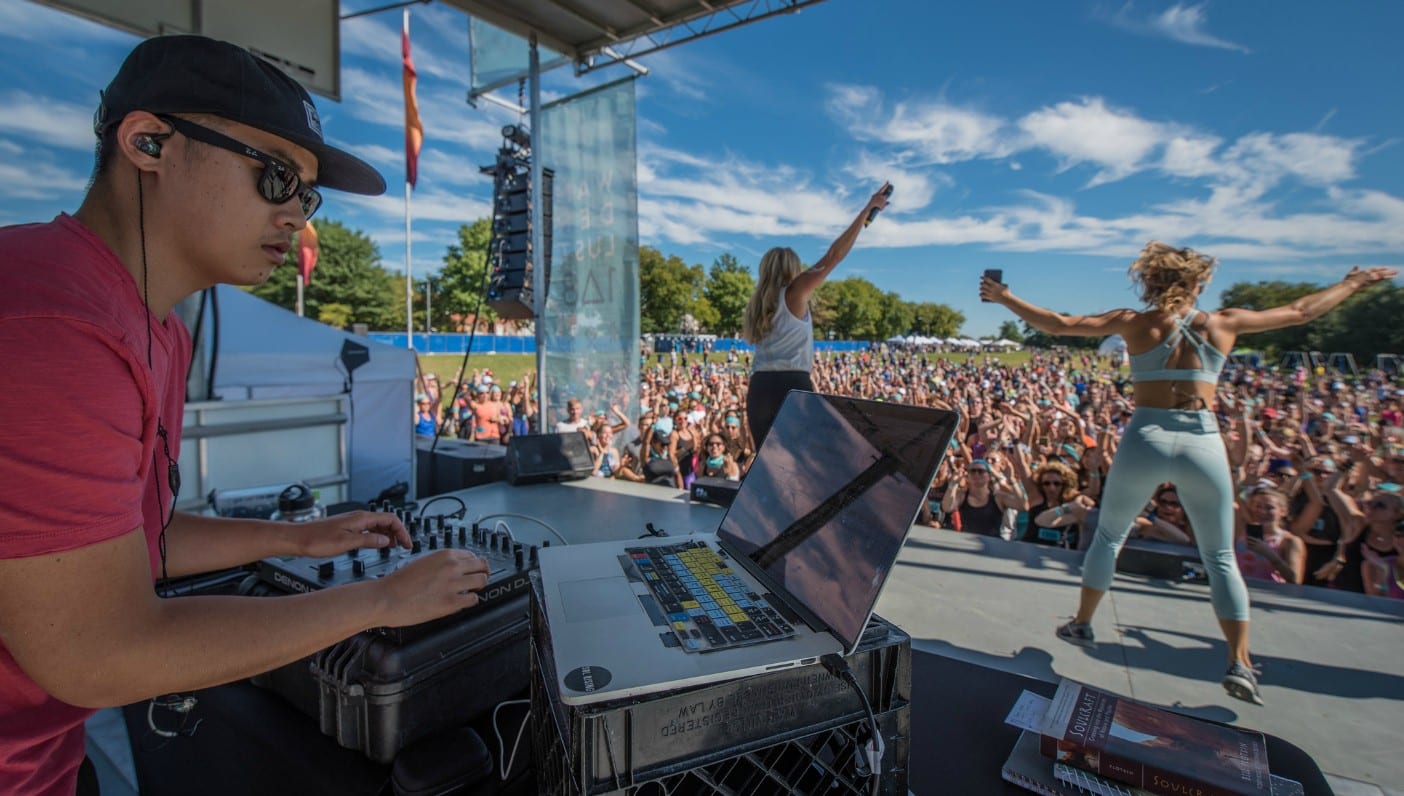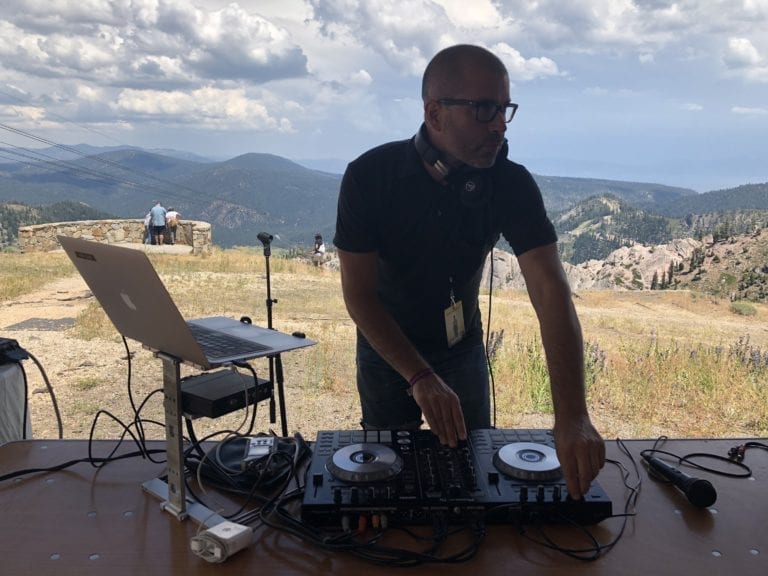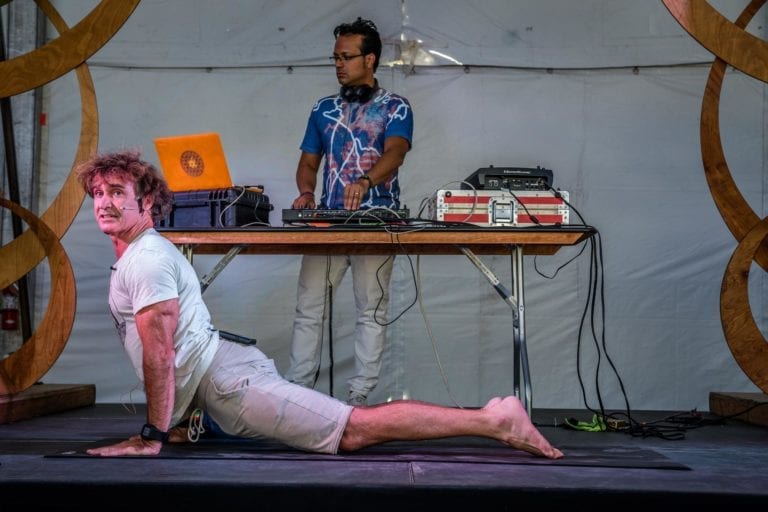
Writing a playlist for class isn’t as simple as adding all your fave songs to a list and pressing go. There are a thousand things to keep in mind—the body to breath connection you’re looking to augment only one among them. How do you create something that keeps people engaged in movement that also allows them to go deep into their mind at the same time? Writing a yoga playlist is an artform, and can be daunting, especially if you’re a new teacher. We asked world-renowned yoga DJ Sol Rising, DJ Taz Rashid, and DJ Jesse Blake to share some of their secrets.
Want to experience their smooth stylings IRL? See them live at a Wanderlust 108 or Wanderlust Festival this year! For tickets and more information, click here.
DJ Jesse Blake’s Top 3 Tips

DJ Taz Rashid’s Top 5 Tips
Tell a story. Music can help create a sound-bed for a story or an immersive experience for the yogi during class. The tracks a teacher selects can carry certain messages, and convey energy used at certain times to reveal an asana narrative during the class. If there are certain words which come to your mind as you create a certain experience, check out your library of music. Maybe you have songs already that carry these words. It is important to keep in mind that the song should be placed in a sequence of music to fit a scene or sequence energetically. I would recommend using no more than 2-3 tracks with verse/chorus style lyrics. These typically tend to do best during long holds later in the practice when there may be less instruction.
Breath and beat connection. Music can be used to help bring together a breath and beat connection by syncing up movement and music. The practice begins with deep breaths, but throughout the class the heart rate and breath will usually increase in intensity. For example, the music can be used to lock in to movement by matching the breath in and out with the kick drum of the beat in the music in a 4/4 count. If a teacher is trying to accomplish this, it’s important to pay attention to the tempo, speed/bpm (beats per minute) of the song.
Let’s add fun. Music adds fun to your practice whether is a funky groove or an awesome remix of a known song. Yoga has a reputation of being a serious practice, but it can also be light, fun, and celebratory. Mix it up and add some fun beats to your playlist!
Music can help the healing process. Let’s face it, we all have things going on in our lives which may cause stress, anxiety, etc. Yoga can be emotional for people as our muscles carry a lot of stress. When these stressors are released—taking heart or hip openers for an example—there might be an emotional release along with it such as tears and releasing sighs. It is nice to be aware of this possibility as a teacher and play music which can be supportive for these deep holds and emotional moments.
Creating energy. Music can generate energy needed for challenging postures and sequences which require a lot of strength. Abs, strong warrior sequences, boat pose etc.—pump up those jams to give the class a lot of energy. Don’t use angelic music or massage music during the parts of class that require your students to strong and vigorous in their movements.
Get the Yoga Playlist of The Month from DJ Taz Rashid here!

DJ Sol Rising’s Top 3 Tips
Structure Example:
- Opening
- Build
- Surya A/B
- Peak
- Land (Beats, Ambient)
- Rest
Organize your music. After you have created a structure, music can be arranged into different categories. I recommend having a master playlist that organizes tracks for the basic structure of a class. When you are creating a playlist for a specific class you will be able to pull from the master playlist in an organized manner.
Make sure music is enhancing not distracting! It’s important to make sure that the music complements the class and is not a distraction. Things to be mindful of are volume, whether the music fits the sequencing, vocal vs instrumental, tempo and energy. I always tell people to not be afraid to turn the volume down if the music becomes distracting or no longer fits the flow. Choose tracks that have a warm feel to them without harsh or abrasive elements that can disrupt and take people out of their practice. Also make sure that the teachers voice can be heard over the music and is not clashing with vocals or other instruments. Instrumental music is generally a safer option but that does not mean vocals cannot be used.